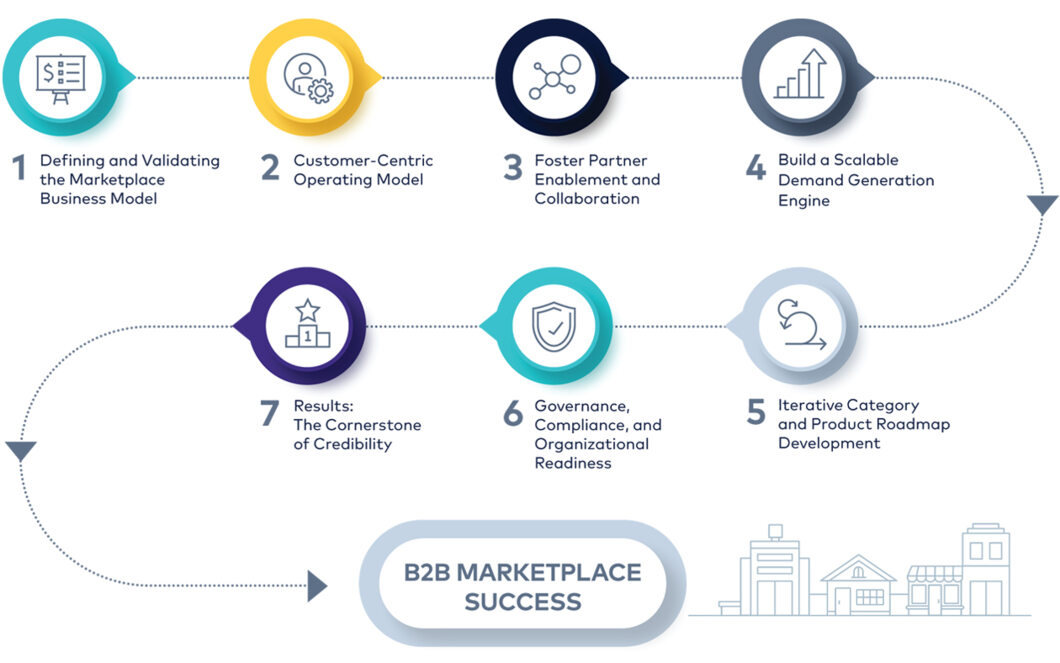
As businesses shift towards digital-first strategies, traditional eCommerce models are no longer enough to meet evolving customer and partner expectations. To stay competitive, Communication Service Providers (CSPs) must rethink their approach - moving beyond simple online sales to full-scale digital marketplaces that bring together best-in-class solutions from multiple providers.
However, launching a marketplace isn’t just about technology - it’s about defining a clear market positioning. Should CSPs control product sales like a traditional eCommerce store, or should they create an open marketplace where partners can sell through the platform? Aligning business goals with the right marketplace model is critical for long-term growth.
We developed a seven-pillar approach to help guide CSPs in their journey to develop a successful Digital Marketplace.

A well-structured marketplace strategy enables CSPs to deliver seamless customer experiences while fostering strong partner relationships. This means focusing not only on customer satisfaction but also on partner enablement - offering transparent onboarding, flexible revenue models, and integrated support structures to ensure marketplace success.
By optimizing demand generation, refining assisted sales strategies, and leveraging AI-driven personalization, CSPs can scale efficiently while improving customer retention. The key is to build a scalable, customer-centric operating model that prioritizes digital fulfilment, partner collaboration, and frictionless buying experiences.